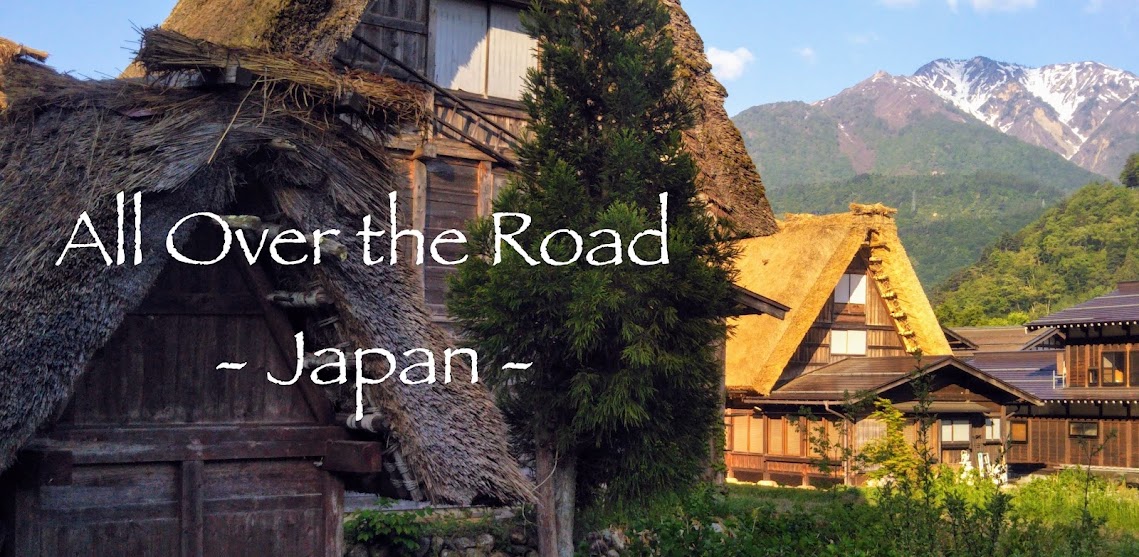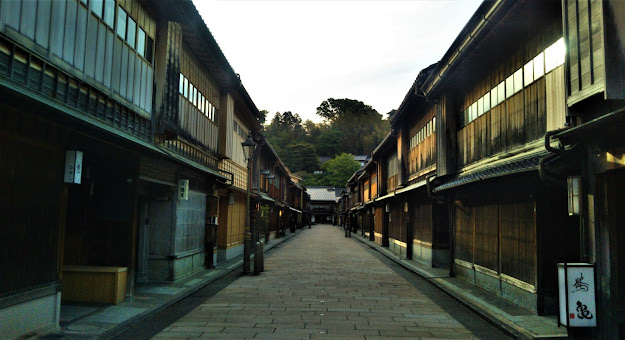
In fifteen years of living and traveling all over Japan that wondrous and fleeting sense of having gone back in time has hit me exactly... twice.
The first time was when I stayed the night in Shirakawa-go, a semi-remote UNESCO World Heritage site flooded with busloads of tourists by day and all but deserted by dark. Under a moonlit sky hemmed in only by the surrounding steep mountains, walking along a strip of rough-cut grass between two rice fields, I paused to look around.
Massive wooden farmhouses slept like thatch-roofed mammoths among the fields. The paved streets and the power lines inescapable in the daylight were gone, vanished in the night as if they’d yet to even exist. All I heard were my own inane whispers of goodness and god. I didn’t want to move. I wanted the world to stay like this.

One year after my evening with the mammoths I found myself up the road in Kanazawa, in the old teahouse entertainment district of Higashi Chaya-gai. Here too, under the dark of night, the only thing younger than Kane Tanaka seemed to be me.

Through much of the Edo Era these teahouses sat scattered across central Kanazawa. Frequented by the wealthy
and privileged classes, these subtly-named chaya were actually dining and entertainment establishments featuring geishas
who would dance, sing and play traditional Japanese instruments while serving
food and pouring drinks and laughing at wealthy and privileged men’s stupid jokes (a far cry from the
modern Japanese hostess, whose talents begin and end with pouring drinks and
laughing at salarymen's stupid jokes).
Distinctive of these old teahouses are the vertical lattices, called kimusuko, that adorn the buildings’ facades. Sometimes referred to as kimushiko (written 木虫籠, meaning 'woodworm basket'), they are as functional as they are attractive.
A cross-section of the slats forming these lattices reveals that they are not rectangular but trapezoidal; the wider sides of the slats face outward, making it more difficult for passersby to see the chaya's interior while maintaining a view of outside for those on the inside.
Personally this whole visibility arrangement seems counterintuitive to me. Think about it: When you finish your ice cream cone, if you bite a hole in the bottom of the cone and look through one end then the other, which way do you think you'll see more of the world before you get drips of leftover mint chocolate chip in your eye?
Another bit of trivia regarding these chaya is the fact that in the Edo Era these were the only residences (as they were classified) that were allowed a second story. All other homes were limited to one floor.I can't claim to know what really went on up there in those second-floor rooms, but perhaps trapezoidal slats weren't enough to keep it all hidden from the prying eyes of the passersby down on the street.
Kanazawa’s third teahouse district, Nishi Chaya-gai, consists of a single street located near the southern bank of the Saigawa, another river running right through town.
As an interesting side note, only one other chaya-gai in all of Japan has been afforded such lofty Cultural Asset status: Kyoto’s famed Gion district, along a side street that, oddly, many tourists never see.
But back to Kanazawa and Higashi Chaya-gai.
None of course are to be confused with the Chaya-gai Geisha District Teahouse Streets of Kazue-machi and Nishi.
Higashiyama, meanwhile, is the larger area of town encompassing Higashi Chaya-gai, while Higashinagae-machi and Higashinagae-machi, two neighborhoods just to the east (higashi is the Japanese word for east in case that hasn't become apparent by now) may be nice in their own forested way but hardly evoke images of geishas clip-clopping around.
Japan is often described as a land of old and new, with the common juxtaposition of the two amounting to something wildly appealing.
The Japan of old, with no sign of the new, seems much more elusive.









No comments:
Post a Comment